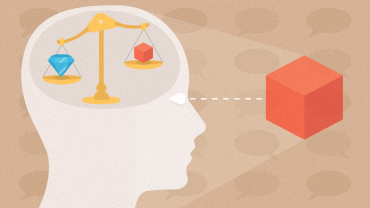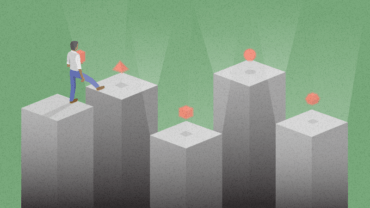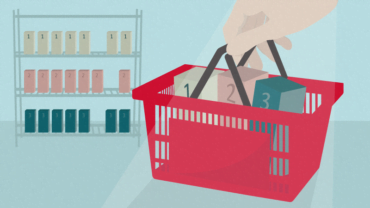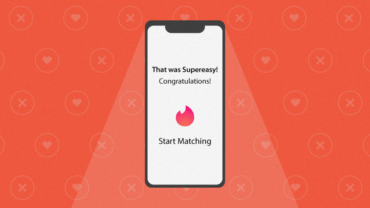4 Clever Ways to Reduce Your Customers’ Pain of Paying According to Psychology
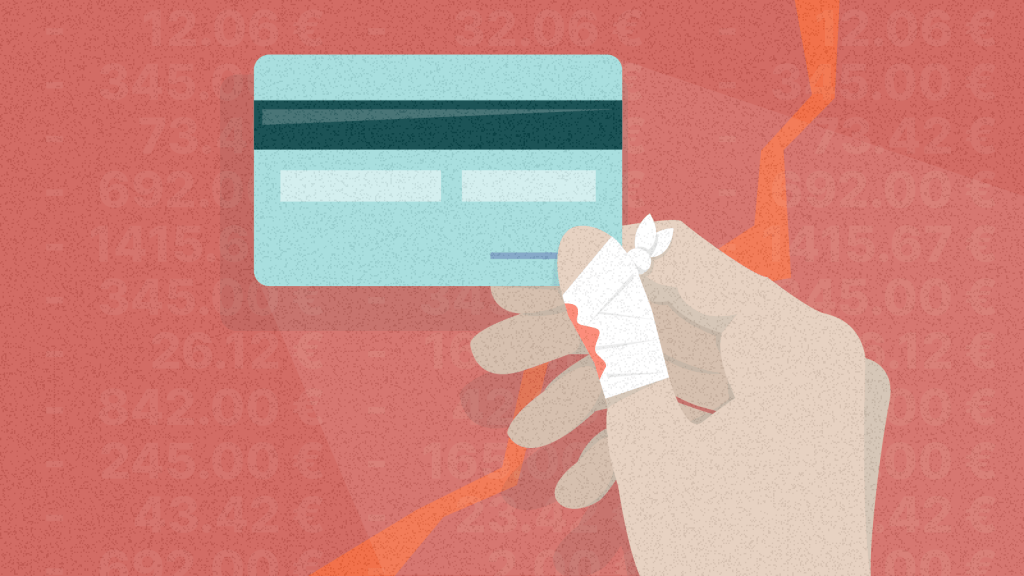
There’s one thing that all of us do every day that no one enjoys. In fact, it’s fair to say people hate it. What is it? Paying! It hurts us almost like physical pain. But what if we could show you how to reduce that pain? What could that mean for your business?
In this article, you’ll find out:
- The best way for customers to feel less pain when paying for your products;
- How paying in advance can reduce your customers’ pain and increase your sales;
- How leveraging the power of free can help your business; and
- What the “left-digit effect” is and how can it help you set more effective prices.
Every small business owner wants to succeed and make a profit. But not everyone understands just how important the way that they pay for products is to customers.
There really is science behind paying, and that science tells us that spending money can cause people real pain. We ignore at our peril what is happening in customers’ minds when they reach for their wallets and swipe their credit cards. The good news is there’s a way to ensure that your customers don’t have such a terrible experience when they’re buying from you.
And if you still think that it sounds crazy that paying for something can create the same feeling as actual physical pain, stay tuned to learn more.
Payment hurts physically
Remember the last time you were in a grocery store or shopping mall and you paid for something? When you were pulling out your wallet and handing over the cash or card to the vendor, how did you feel? When we mentioned that paying can cause real physical pain we meant it literally.
Researchers Brian Knutson and Roger Lowenstein and their collaborators discovered that the pain of paying shows up in the brain. The results of their study suggest that when we encounter excessive prices, the so-called insula shows increased activation before a purchase decision. This part of the brain is associated with experiencing negative emotions and physical pain. Another study documented that the pain centers of the brain activated when experimental subjects saw prices – particularly prices that were too high.

Discover ground-breaking ideas and fascinating solutions.
A mental feeling like this is known as The Pain of Paying. It was coined twenty years ago by the consumer psychologist Ofer Zellermayer and his colleague George Loewenstein. This term simply refers to the negative emotions experienced during the process of paying for goods or services. We lose money when we pay, and as most people are loss averse, they experience a negative feeling that can translate into spending less and buying less.
Those seem like they could be valuable lessons for your business, don’t they? Now, let’s dig deeper into some more sophisticated strategies on how to soften the pain of paying.
1. Pay in advance
One of the lessons that have been learned is that paying that first dollar hurts the most and every additional dollar hurts less and less.
Let’s imagine this principle in the following example. Maybe a lot of you have paid a visit to an “all you can eat” restaurant – a restaurant where you pay a fixed amount, load your own food, and eat as much as you want. You feel the worst pain in the beginning, but then it’s over. You fill up your plate to the brim and enjoy your meal.
Compare that to the menus where every item has its own price and you have to calculate in your mind how much your dinner with your boyfriend or husband will cost.
One of the lessons that have been learned is that paying that first dollar hurts the most and every additional dollar hurts less and less.
This is also backed by science. Loewenstein and Prelec found in their landmark study that consumption that has already been paid for can be enjoyed as if it were free and that “the pain associated with payments made prior to consumption (but not after) is buffered by thoughts of the benefits that the payments will finance.” They called this phenomenon “prospective accounting”.
The most important fact is that it´s applicable in all sorts of businesses. Let’s take the holiday industry. A pre-paid all-inclusive holiday will be more enjoyable if the pain comes at the start, and afterwards you don’t have to check the prices on the restaurant menu all the time. Imagine waking up every day with the feeling that you need to keep track of all the different prices you’ll have to pay for drinks at the beach bar. God, no, it hurts!
2. Sell in bundles or packages
Another strategy that is suitable for implementation and reduces the pain of paying is “bundling”, or selling goods in packages. Try to package multiple products together with a discount price rather than selling them separately.
Why can this strategy help? Because, as we explained above, the first buck hurts the most. So for example, when your customers buy a bundle of three products, they only make that first payment once. If they had to pay for the three products separately, they would have to live through that painful first payment three times.
Vineet Kumar, an assistant professor in the Marketing Unit at Harvard Business School, says that “Bundling is pervasive in several markets, and it works in many cases”. Kumar and his collaborators studied the handheld video game market between 2001 and 2005 (a period when Nintendo enjoyed a virtual monopoly), specifically Nintendo’s Game Boy Advance and GameBoy Advance SP consoles and the games for both devices.
When your customers buy a bundle of three products, they only make that first payment once. If they had to pay for the three products separately, they would have to live through that painful first payment three times.
They found that Nintendo increased sales for most products when they offered a bundle option — a video game console and a game sold together as one package. But only with one condition: when this offer was accompanied by the option to buy each piece individually. This “mixed bundling” resulted in higher sales by approximately 100,000 units and sales of game cartridges reached over a million units when bundles were offered.
In the second scenario, where there was only “pure bundling”, the video games company performed much worse when compared with both the offer without any bundle and those with mixed bundling. What all this means is that, as Kumar says, “it’s crucial to allow that flexibility to the consumer.” In the end, don´t forget to give your customers the comfort of choosing. “If the company allowed consumers to purchase consoles with any game they wanted – to create the bundle themselves – it might do even better,” adds the researcher.
Similar results were discovered in another study carried out by researchers John T. Gourville and Dilip Soman. Ultimately, companies can make more money by bundling and customers will be nudged to spend more money in a way that will not hurt them.
When it comes to bundling, doing it in a clever way can raise your profits while reducing the pain of paying for your customers.
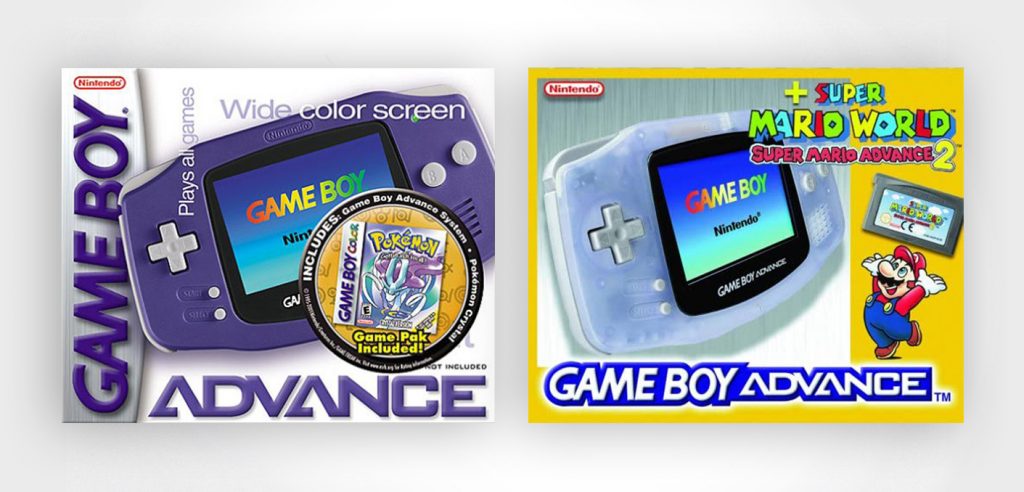
Source: Nintendo
3. The power of free
Nothing is more powerful than the idea of a “free lunch”. The word FREE is magical. When you can have something for free, most people will take it no matter what it is. The power of free can also reduce the pain of paying and help businesses to raise profits.
The advantage of the power of the word FREE lies in its effectiveness even when only a part of the product is involved.
Imagine the following offer for a new hoodie:
- $50 + $10 shipping
- $60 + FREE shipping
- FREE + $60 shipping
Which of these options is best for the customer? In an ideal, purely rational world that would seem like a redundant question because all of these options cost the same amount of money. But in the real world, the world we actually live in, the question makes sense. Certainly, the best option is not the first one, because there is nothing free in it. In fact, the third option – a free hoodie with shipping – is the best, at least according to behavioral economist Dan Ariely, who used a modified example with a book in his video lecture.
The power of free was also tested by one email marketing platform company, GetResponse. They wanted to test if adding a Free Trial button on the home page would influence the number of purchases of paid accounts and number of registrations of free accounts. Interestingly, they were a little afraid that the Free Trial button might decrease the number of sign-ups.

Source: VWO
What they did was place the “Free Trial” call to action button beside the “Buy Now” button. The results were astonishing. The number of free accounts increased 158.6% from when the trial buttons were added, while there was no negative effect on the number of paid accounts created.
Framing the offer with the magical and emotional appeal of “FREE” can make a world of difference to your business.
People are drawn to the lure of free. And the fact that they can get something for nothing usually blinds them to more rational reasoning. Framing the offer with the magical and emotional appeal of “FREE” can make a world of difference to your business.
However, as usual, there are caveats – two in particular. Bear in mind that people dislike paying for things that used to be free. Do not make products free if you intend to charge for them in the future.
The second caveat lies in perceiving a free product as a low-quality product. There is a way around this problem, however. In this article about the perceived value, you’ll learn what you can do.
4. Use the left-digit-effect
Have you ever looked at a shop window and wondered why almost every product had a price ending with the number nine? Why $3.99 and not $4? Maybe you asked yourself why they didn’t just use prices with round numbers? It would be much easier to count the items in your shopping bag and work out the final price.
How can one cent be a crucial element in whether the customer will buy the product or not? Well, maybe you don’t know what the marketers and behavioral scientists know.
The good news is it can be applicable to many different industries. One powerful example of this concept can be found in a study published in the American Economic Review. They analyzed over 22 million wholesale used-car transactions and found that “cars with odometer values between 79,900 and 79,999 miles sold on average for approximately $210 more than cars with odometer values between 80,000 and 80,100 miles”. But they sold for only $10 less than cars with odometer readings between 79,800 and 79,899.
These insights clearly show that, although the numerical difference between $ 5,00 and $ 3,99 and $ 5,01 and $ 4,00 is the same, many customers don´t look at prices through a rational lens.
This willingness to pay more was also repeated in the real estate sector. One study claims that houses listed at certain charm prices sell for significantly higher prices than those listed at round number prices.
But it’s more than just that. When researchers Manoj Thomas and Vicki Morwitz studied the “charm prices” they found that nine-ending prices are perceived to be smaller than prices one cent higher when,
- the leftmost digits of the prices differ (e.g. $2.99 vs. $3.00),
- the two prices being compared are closer, increasing the power of the left digit effect.
These insights clearly show that, although the numerical difference between $ 5,00 and $ 3,99 and $ 5,01 and $ 4,00 is the same, many customers don´t look at prices through a rational lens. Your business can take advantage of this.
Key takeaways
- Paying hurts. If possible, your sales funnel should prioritize payment by credit cards instead of cash. And remember, the most painful payment is the first one, followed by a second that hurts less and so forth.
- Consider selling your products in bundles, but make it smart – it will lower the pain of paying. Remember that bundling works better when the customer has a choice between buying a whole package or items from it separately.
- The word FREE is a powerful lure, so frame your offer cleverly and take advantage of it. But bear in mind that you can´t mark products free if you intend to charge for them in the future.
- Use the left-digit effect and the way our brain reads to set up a pricing policy that can increase your sales. If possible, put two comparable products or services as close to each other as possible. That will highlight the price difference and the advantage of the offer.

